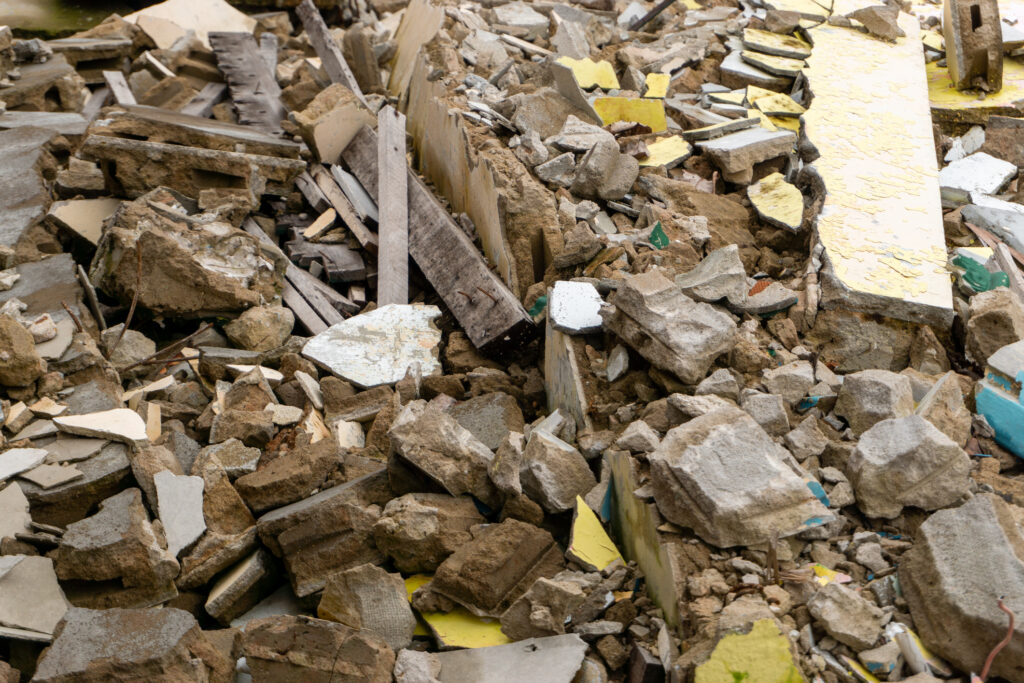Letter: Embodied Carbon in Jones Library Demolition Debris Undermines Town’s Climate Action Goals

Photo: istock
The following letter was sent to the Amherst Historical Commission on August 28, 2024.
“Our town has committed to reduce carbon emissions 25% by 2025, on the way to carbon neutrality by 2050. We all have a role – businesses, landlords, residents, institutes, and the town.” The preceding is a quote from our town’s climate action plan. All committees and commissions of the town are expected to be committed to these reductions.
Many things about the Jones Library demolition and expansion plan concern me. I am writing about your committee having given permission for the demolition of the 1993 addition – a building that is barely 30 years old. Unfortunately the USA hasn’t been able to agree on how to evaluate the cost to the environment of this demolition. The architects for the Jones expansion were awarded first prize in a contest for their plan to reduce embedded carbon. They also received a $50,000 cash award. Hurrah for them in their forward thinking. Unfortunately some of the most meaningful parts of that plan are being discarded for financial reasons and the demolishing of the addition and the resulting embedded carbon were not evaluated in that contest.
Here is some general information:
Types of Carbon Footprint
Upfront Carbon: Carbon emissions caused by the production of materials, transport of materials to the construction site, and construction of the building(s), prior to the building(s) being occupied (modules A1-A5).
Use Stage Embodied Carbon: Carbon emissions associated with materials and processes needed to maintain the building during use such as for maintenance, repair or refurbishments (modules B1-B5).
Operational Carbon: The carbon emissions associated with energy used to operate the building (module B6), operational water use (module B7) and fugitive emissions of refrigerants (module B1). In corporate carbon footprinting, these emissions are known as scope 1 and scope 2 emissions.
End-of-Life Carbon: The carbon emissions associated with deconstruction/demolition, transport from site, waste processing and disposal phases of a building’s life cycle which occur after its use.
As a commission did you ask about the climate footprint of the demolition and then construction of new space to replace the space that is in the addition?
As a commission did you ask about the climate footprint of the demolition and then construction of new space to replace the space that is in the addition?
Our Amherst energy task force did not get to weigh in on this question and our town does not have the expertise to evaluate demolitions so it is up to all sectors of our community to do that can be done to reduce our carbon emissions.
Because we have no national agreed upon way to measure the embodied carbon, it behooves everyone doing their prescribed committee task to get as much information as possible on ways our community can avoid harming the environment with it’s actions and to also recognize the opinions of those in the community who have been focusing on/writing articles on climate change as it pertains to the library and to all the other town owned building.
Lydia Vernon-Jones
Lydia Vernon-Jones is a resident of Amherst

Recalling Carl Elefante’s assertion that the greenest building is the one that is already built, https://carlelefante.com/insights/the-greenest-building-is/
the Indy asked the folks at Sunrise Amherst if they could calculate the amount of embodied carbon that is likely to be contained in the Jones Library demolition debris. Julian Hynes took up the challenge. He noted that such calculations are complicated and require some pretty specific inputs. Nonetheless, he came up with a ballpark, back of the envelope calculation for us.
1,600 tons of steel and concrete demolition debris from the 1993 addition converts to 4530 meters cubed of debris. That equates to a total of 2935 metric tons of CO2 that would be emitted from such a demolition project. To put that in perspective, 3,200 sapling trees would need to be planted to offset those emissions. The emissions from the demolition would also be equal to the emissions produced by 92 cars on the road assuming said car is gasoline powered, lasts 16 years and averages 24 miles per gallon. (Used EPA averages and estimates in those comparisons).
Hynes used some conversion formulas from a math textbook for the first calculation and then used an online CO2 calculator that works with demolition debris for the metric tons calculation. That caluclator can be found here: https://www.vector-construction.com/environmental-impact-calculator
I did an independent, back of a postage-stamp calculation: embodied CO2 in concrete and steel is between 1/2 and 2 times the mass of the material, so (assuming the total mass of the demolished Jones Library structure is correct), that gives a range of between 800 and 3200 tons of embodied CO2, plus considerably more CO2 that would result from the demolition and hauling of debris and replacement material.
Of course (if the culprits don’t manage to stay out of prison …. 😉 the CO2 impact — as well as the financial and social costs — of building and staffing additional prison cells will also need to be accounted for….